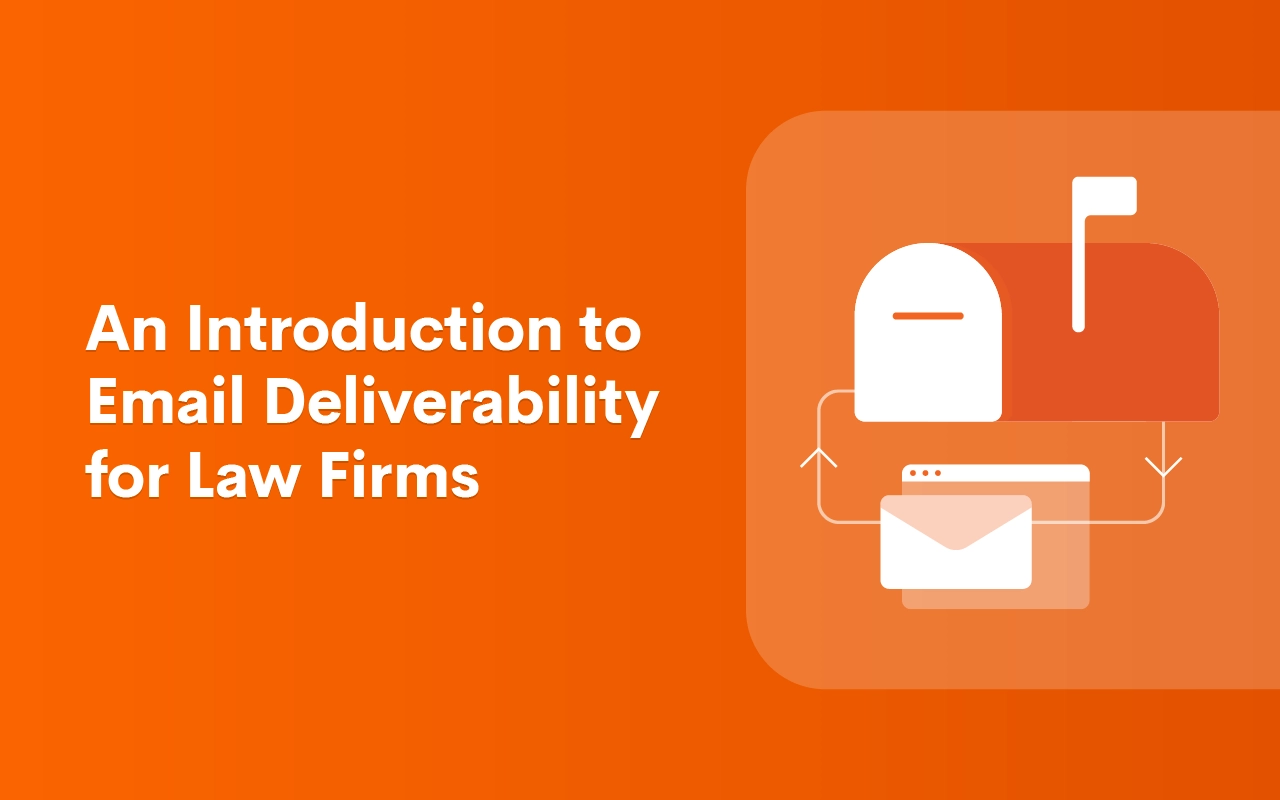An Introduction to Email Deliverability for Law Firms

Picture this: A client is anxiously awaiting an email containing documents they need to sign before a fast-approaching legal deadline. The clock is ticking but that crucial email is lost somewhere in cyberspace or trapped in a spam folder and the window of opportunity is getting smaller with each passing minute. What do you do?
What is email deliverability?
The scenario above is a classic email deliverability nightmare. To better understand what’s going on, let’s back it up a step. You may have heard the term ‘deliverability’ thrown about, but how much do you know about it?
At its core, email deliverability is the successful delivery of an email to the intended inbox.
But there's a lot that goes on behind the scenes to make this possible. Achieving good deliverability means navigating the intricate dance between technical aspects, such as server configurations and domain reputation, and the nuances of content quality and data cleanliness. Achieving high deliverability is both an art and a science that often requires wearing a lot of different hats.
Because of this, we have a dedicated team that is constantly working to make our platform better and support you through resolving tricky deliverability problems. If you’ve ever run into a high bounce rate issue or needed to solve a last-minute missing document mystery, you’ve likely spoken to myself or one of our amazing support specialists.
We’re heavily focused on making sure we deliver emails as consistently and reliably as possible for you and your firm. We know that it's not just about sending messages; it's about ensuring they're received and received well.
Why does it matter?
1Essential communication and trust building
Email is a crucial communication channel between your firm and its clients. When important updates or time-sensitive documents don't reach their intended recipient, it's not just a missed connection. It's a lost chance to build trust, display your expertise, and nurture invaluable client relationships.
2Business impact and reputation
A tarnished email reputation can have lasting consequences. In my experience, it can take up to a month (in some cases, even longer) to mend the damage caused by sending emails to an outdated or purchased list. Even accidental missteps can tarnish your firm's overall reputation, diminishing client confidence in the long run and creating logistical headaches.
3Efficiency and productivity
The need to constantly follow up or resend emails isn't merely an inconvenience. It's a drain on your team's productivity, diverting time and resources away from essential tasks, direct client engagement, and achieving a better work-life balance.
4Revenue and engagement
Marketing emails continue to be a major revenue driver for all sorts of businesses and the legal industry is no different. A well-timed email campaign, even a minor one, can significantly boost your firm's ROI. But for maximum impact, it's vital that your emails reach their intended inboxes. Every email that doesn’t reach its intended inbox represents a missed business opportunity.
Guiding principles
There are some key factors that heavily influence how your emails land and your reputation as a sender:
Permission
How do you collect your lists? Having explicit, up-to-date, and verifiable permission from your subscribers is the foundation of good deliverability. It helps build trust while also ensuring that you’re compliant with email regulations and standards. Consider using a double opt-in mechanism whenever possible to reinforce permission and reduce risk, as sending to recipients who haven’t opted in can result in significant consequences for your firm.
List hygiene
How do you make sure that your lists are up-to-date? Email lists naturally decay over time. On average, you should expect around 25% of your email database to degrade each year as people change jobs, abandon old email accounts, or unsubscribe. Maintaining a clean and current email audience helps you avoid problems like high bounce and spam complaint rates.
Engagement
Are you sending to subscribers who are engaged with your content? Engagement rules all in the deliverability world. Different metrics can help provide some insight into who is engaged with your content and lets you know who you should be targeting with your campaigns.
We’ll dig deeper into what this means in our next installment, but it’s a good idea to start thinking about these questions if you’re not already.
What’s next?
This series will break down deliverability terms, strategies, and best practices, aiming to help law firms and anyone else interested in effective email communication. Some topics on the horizon include: domain and IP reputation, a deep dive on authentication methods like SPF and DKIM, and how to avoid accidentally spamming your clients. Whether you're a law professional, a marketer, or just someone looking to elevate your email game, stay tuned.
Have a question or want to share an experience? We'd love to hear from you! Reach out to us at mail@lawmatics.com.


